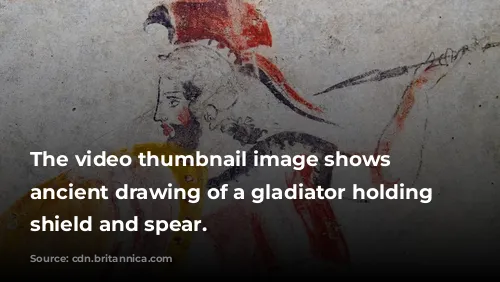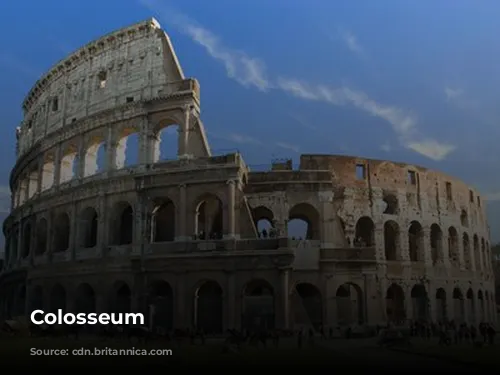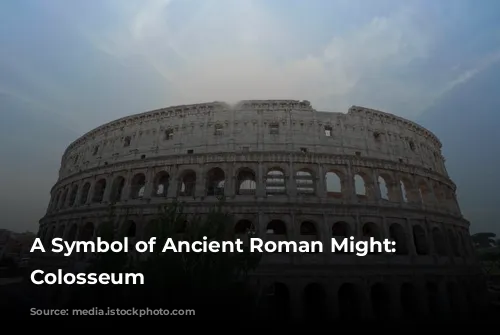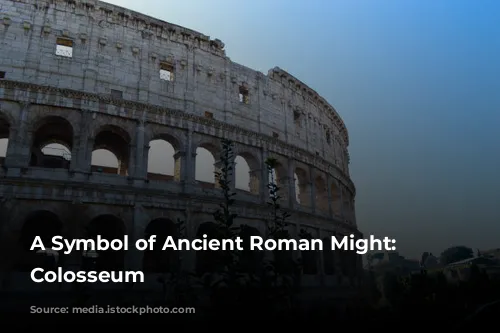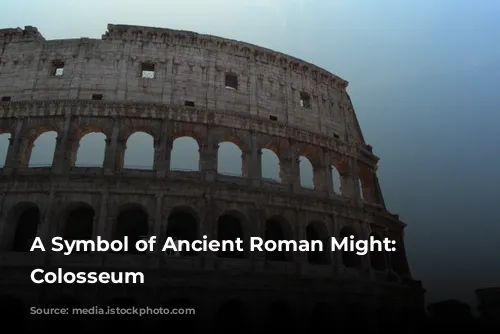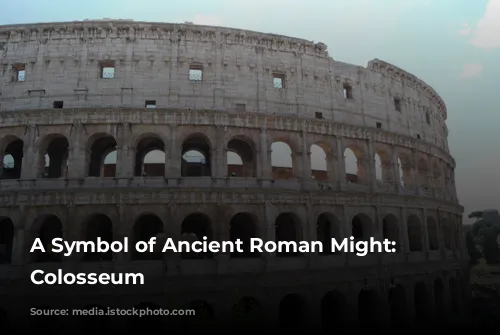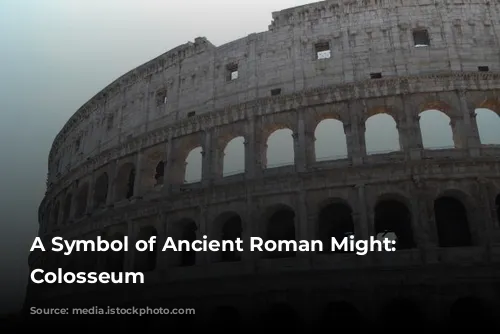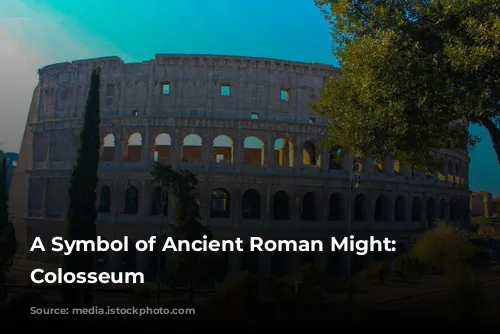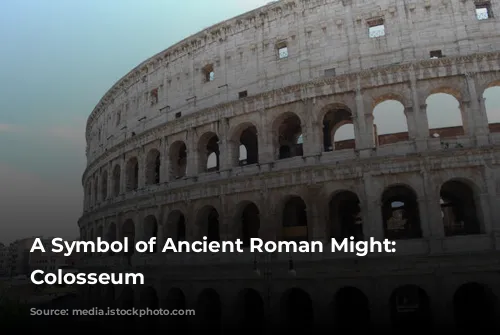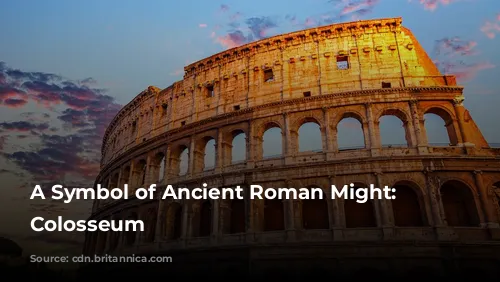Standing as a testament to the architectural and engineering brilliance of ancient Rome, the Colosseum is one of the few structures from that era that remains largely intact. Today, this iconic landmark not only captivates visitors with its grandeur but also generates significant tourism revenue for Italy. In 2018 alone, the Colosseum, along with the Roman Forum and Palatine Hill, attracted millions of tourists, contributing over $63.3 million (€53.8 million) to the Italian economy – the highest revenue generated by any tourist attraction in the country.
The Colosseum’s journey through time has been marked by periods of both prosperity and neglect. Following the fall of the Western Roman Empire, the structure fell into a state of disrepair. In the 12th century, the Frangipane and Annibaldi families, powerful Roman families of the time, transformed the arena into a fortress, utilizing its imposing structure for their own purposes. In the late 15th century, Pope Alexander VI permitted the Colosseum to be used as a quarry, allowing people to take pieces of the monument for their own use. After over a thousand years of neglect, the Italian government finally initiated state-funded restoration efforts in the 1990s, beginning the long process of reviving this historical treasure.
Built for Entertainment and Imperial Glory
The Colosseum’s construction was a grand project undertaken by the Flavian emperors, Vespasian and Titus, to revitalize Rome after the chaotic year of the four emperors (69 CE). Like other amphitheaters of the time, the Colosseum was envisioned as a platform for public entertainment, hosting a variety of spectacles to enthrall the Roman populace. From thrilling gladiator fights and fierce animal hunts to elaborate mock naval battles, the arena provided Romans with an outlet for entertainment and a glimpse into the might of their empire.
Construction of this monumental structure commenced under Vespasian between 70 and 72 CE. The Colosseum was officially inaugurated in 80 CE by Titus, Vespasian’s son and successor, in a grand ceremony that featured 100 days of games. Further embellishments were added by Domitian, Titus’s brother, who oversaw the completion of the fourth story in 82 CE. Notably, the funds used to construct the Colosseum came from the spoils of war, specifically the plunder seized by Titus during the sack of Jerusalem in 70 CE. Tragically, enslaved Jews from Judaea were also forced to work on the construction of the Colosseum.
A Masterpiece of Architecture and Engineering
The Colosseum is an elliptical structure built of stone, concrete, and tuff, standing four stories tall at its highest point. Measuring an impressive 620 by 513 feet (189 by 156 meters), the Colosseum could accommodate up to 50,000 spectators. This awe-inspiring structure was famously used for gladiatorial combat, where skilled warriors engaged in thrilling battles for the entertainment of the masses.
The Colosseum was strategically located just east of the Palatine Hill, on the site of Nero’s Golden House. Vespasian, a man who rose to power from relatively humble beginnings, chose to replace Nero’s extravagant private lake with a public amphitheater – a symbolic gesture that emphasized the Flavian dynasty’s commitment to the Roman people. Unlike earlier amphitheaters, which were often built into hillsides for support, the Colosseum is a freestanding structure. Its construction employed a complex system of barrel vaults and groin vaults, demonstrating the architectural ingenuity of Roman engineers. Three of the arena’s stories are adorned with arcades, framed by engaged columns in the Doric, Ionic, and Corinthian orders. This arrangement of columns became a defining feature of Renaissance architecture. The Colosseum’s main structure and façade are made of travertine, with volcanic tufa used for the secondary walls. The inner bowl and arcade vaults are crafted from concrete, a testament to the Romans’ mastery of this durable material.

A Venue for Spectacle and Symbolism
The Colosseum was designed to provide optimal viewing for its massive audience. A retractable awning, known as a velarium, protected spectators from the sun’s glare. Supporting masts extended from corbels built into the Colosseum’s top story, requiring hundreds of Roman sailors to manipulate the rigging that raised and lowered the velarium. The Colosseum served as a stage for a variety of spectacles, from gladiatorial combat and animal hunts to mock naval battles. While the Colosseum was undeniably a symbol of Roman power, its role in the martyrdom of early Christians remains uncertain.
Through the centuries, the Colosseum has witnessed both grandeur and decline. In medieval times, the structure was repurposed as a church and later served as a fortress for powerful Roman families. Over time, the Colosseum suffered from the ravages of nature, including lightning strikes and earthquakes, as well as vandalism and pollution. Precious marble seats and decorative materials were gradually stripped away, leaving the site in a state of decay for over a thousand years. However, the Colosseum’s enduring legacy and historical significance eventually prompted preservation efforts, beginning in earnest in the 19th century. Notable efforts were led by Pope Pius VIII, and a major restoration project was undertaken in the 1990s.
A Timeless Legacy
Today, the Colosseum remains a testament to the ingenuity and grandeur of ancient Rome. As one of Rome’s most popular tourist attractions, it draws millions of visitors each year, eager to witness its majestic presence and learn about the fascinating history it embodies. Regularly changing exhibitions showcasing the culture of ancient Rome are held within the Colosseum, offering visitors deeper insights into this remarkable era. The Colosseum continues to captivate the imagination, serving as a reminder of the enduring power of human creativity and the enduring legacy of the Roman Empire.
